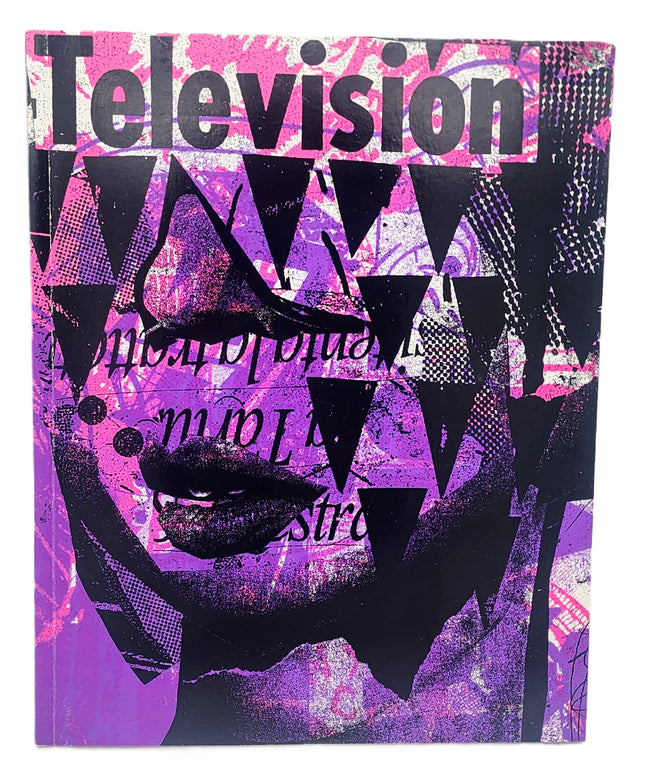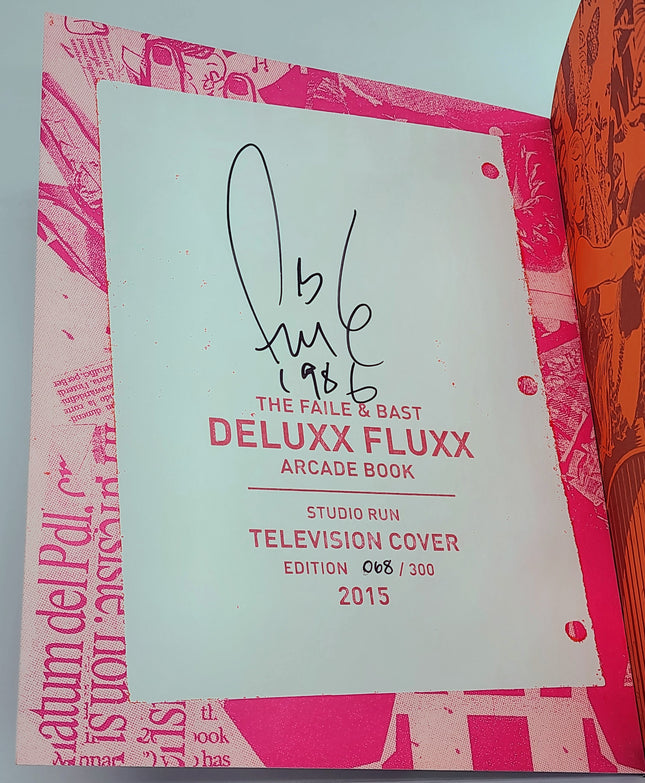
Electronics


Faile Deluxx Fluxx Arcade Book Television Cover by Faile x Bast- Michael Polimeni
Deluxx Fluxx Arcade Book Studio Run Television Cover by Faile x Bast- Michael Polimeni Rare Limited Edition Modern Pop Graffiti Urban Culture Artworks Reference. 2015 Signed by Faile 1986 Limited Edition of 300 Book Size 8x10 "The Faile & Bast Deluxx Fluxx Arcade Book Studio Run Television Cover. The Fusion of Faile and Bast in "Deluxx Fluxx Arcade": A Chronicle of Street Pop Art Faile, a Brooklyn-based artistic collaboration, and Bast, known as Michael Polimeni, has resulted in a remarkable project: "The Faile & Bast Deluxx Fluxx Arcade Book Studio Run Television Cover." This rare limited edition piece, a convergence of modern pop graffiti and urban culture artwork, encapsulates a pivotal moment in street art history. The 2015 signed edition by Faile, limited to 300 copies, is a testament to the creativity and synergy between these two giants in the street art community. Capturing Urban Culture Through Mixed Media The "Deluxx Fluxx Arcade Book" is not merely a collection of images but a historical record of the evolution of street pop art and graffiti artwork. Through its pages, one can trace the journey of Faile and Bast from the streets to the revered spaces of art studios and galleries. The book's television cover edition, with its size of 8x10 inches, is a kaleidoscope of colors, textures, and patterns. It chronicles the studios' forays into the arcade world, where the interactive nature of games becomes a new medium for artistic expression. The cover, a vibrant melange of purples and blacks, speaks to street art's dynamic and often disruptive nature, as it takes familiar visuals and repurposes them in unexpected ways. Legacy of the "Deluxx Fluxx Arcade": A Cultural Milestone The significance of "The Faile & Bast Deluxx Fluxx Arcade Book" within the street art narrative cannot be overstated. It captures a moment when the lines between high art and street culture blur, a period where artists like Faile and Bast redefined the parameters of pop art. This book serves as both a visual feast and an academic reference for those studying the impacts of street art on modern culture. Each page, each image, is a piece of a giant puzzle that, when assembled, reveals the full scope of Faile and Bast's impact on the art world. This collaborative project between Faile and Bast, encapsulated in the "Deluxx Fluxx Arcade Book," represents a significant chapter in the story of street pop art and graffiti. It is a vibrant, living document of the creativity and cross-pollination of ideas that define the genre. For collectors and enthusiasts alike, the limited edition book is a treasure, a slice of history, and a source of endless inspiration. It is a vibrant manifesto of the transformative power of collaboration in the art world.
$999.00



